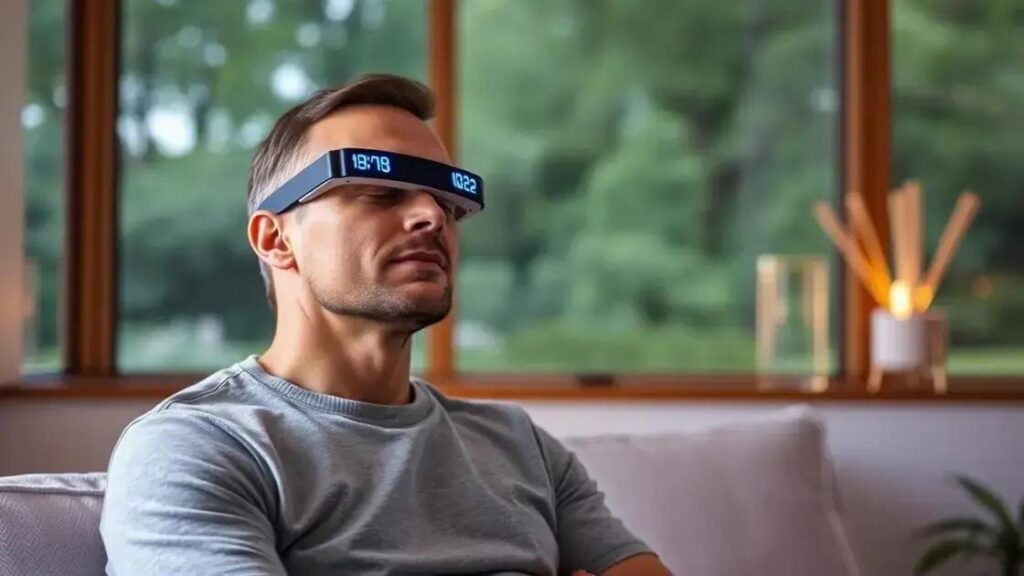Biofeedback devices help men manage stress by providing real-time feedback on physiological functions, increasing self-awareness, and teaching effective relaxation techniques. These tools enable users to recognize their stress responses and utilize strategies for better stress resilience, promoting improved mental health and overall well-being.
In today’s fast-paced world, stress management is crucial for maintaining health. How biofeedback devices are helping men manage stress is a topic gaining traction as more individuals seek effective ways to cope with tension. These innovative tools enable users to gain insights into their physiological responses, offering a pathway to emotional and physical balance. In this post, we’ll delve into the specifics of biofeedback technology, its benefits for men, practical applications, and what the future holds for these stress-relieving devices.
Understanding Biofeedback Devices

Biofeedback devices are tools that help individuals understand and regulate their body’s physiological functions. These devices measure various bodily signals, such as heart rate, muscle tension, and brain waves, providing real-time feedback to users. This feedback enables men to gain awareness of their stress responses and learn how to control them effectively.
How Biofeedback Works
When using a biofeedback device, sensors are attached to the body to monitor specific functions. For example, heart rate variability can be tracked to assess how well the body manages stress. Users view their data on a screen, allowing them to identify patterns and triggers associated with their stress levels.
Types of Biofeedback Devices
There are several types of biofeedback devices available, each focusing on different aspects of health. Some common types include:
- Heart Rate Monitors: Measure heart rate and variability to assess emotional responses.
- Thermal Biofeedback Devices: Monitor skin temperature, which can indicate stress levels.
- Electromyography (EMG) Devices: Track muscle tension and provide feedback on relaxation techniques.
How Biofeedback Supports Stress Management
By using biofeedback devices, men can learn relaxation techniques and coping strategies. They can practice exercises such as deep breathing, visualization, or progressive muscle relaxation. As they gain skill and confidence, they become better equipped to handle stress in daily life.
Biofeedback training extends beyond the devices themselves; it often includes guidance from trained professionals. This can enhance the learning experience and help men apply their skills in real-world situations.
Benefits of Biofeedback in Stress Management

Biofeedback has many advantages when it comes to stress management. It provides men with the tools they need to understand their body’s responses and learn how to manage them. Here are some key benefits:
Increased Awareness
One significant benefit of biofeedback is that it increases self-awareness. Men can see how their stress levels change in real-time as they face different situations. This awareness helps them recognize their triggers and reactions.
Improved Relaxation Techniques
By using biofeedback devices, men can learn effective relaxation techniques. They can see how deep breathing or visualization affects their heart rate and muscle tension. This direct feedback helps them identify which techniques work best for them.
Better Stress Resilience
Consistent practice with biofeedback can lead to improved stress resilience. As men become more skilled at managing their physiological responses, they can cope better with stressful situations. Over time, this leads to reduced anxiety and enhanced emotional stability.
Enhanced Mental Health
Using biofeedback can contribute to overall mental well-being. By successfully managing stress, men can experience fewer symptoms of anxiety and depression. This improvement supports healthier relationships and increases productivity in daily tasks.
Furthermore, the skills learned through biofeedback create a lasting impact, empowering men to sustain their well-being long after they stop using the devices.
How Men Can Use Biofeedback Effectively

Men can use biofeedback effectively to manage stress by following some simple yet powerful practices. Here are some strategies to consider:
Choose the Right Device
Finding the right biofeedback device is essential. Some options focus on heart rate, while others track muscle tension or breathing patterns. Research the benefits of each type, considering your specific stressors and personal preferences.
Create a Consistent Routine
To maximize the benefits, men should integrate biofeedback sessions into their daily routine. Setting aside a specific time each day for practice helps build consistency. For example, morning sessions can prepare one for the day ahead.
Practice Mindfulness Techniques
Incorporating mindfulness into biofeedback training enhances effectiveness. Use your biofeedback device to practice meditation or deep breathing. This combination allows users to see immediate physiological changes, reinforcing the connection between mind and body.
Track Progress
Keeping track of progress is vital for motivation. Record how your stress levels change over time with regular biofeedback use. Many devices offer apps to help users monitor their results. Observing improvements can inspire continued practice and encourage healthy behavior.
Seek Professional Guidance
If possible, consider working with a trained biofeedback therapist. These professionals can provide personalized instruction, helping men utilize biofeedback techniques more effectively. With expert guidance, users can learn faster and gain deeper insights into their stress management skills.
Future of Biofeedback Technology for Stress Relief

The future of biofeedback technology for stress relief looks promising as advancements continue to evolve. As technology improves, these devices are becoming more efficient and user-friendly.
Integration with Wearable Technology
Biofeedback is increasingly being integrated into wearable devices. Smartwatches and fitness trackers now offer features that monitor stress levels, heart rate variability, and other physiological signals. This makes it easier for men to access biofeedback information throughout their day.
Personalized Feedback
Future biofeedback devices aim to provide personalized feedback based on individual responses. Advanced algorithms will analyze data, creating tailored interventions that suit a user’s specific needs. This level of customization can enhance the effectiveness of stress management strategies.
Telehealth and Remote Therapy
As remote healthcare expands, biofeedback therapy will likely become more accessible through telehealth platforms. Men can connect with trained therapists for guidance while using biofeedback devices at home, allowing for greater flexibility and comfort.
Enhanced Data Analytics
The growth of data analytics will also play a role in the evolution of biofeedback technology. By aggregating data from multiple users, manufacturers can identify trends and develop new solutions tailored to the needs of various demographics.
Incorporation of Virtual Reality
Virtual Reality (VR) is another exciting future avenue for biofeedback. Integrating VR with biofeedback tools can create immersive environments for relaxation and stress reduction. Users can practice mindfulness techniques in virtual settings that promote calmness.
As biofeedback technology continues to evolve, it holds the potential to revolutionize how men manage stress, making it easier to maintain a healthy lifestyle.
In Conclusion: Enhancing Stress Management through Biofeedback
Biofeedback technology is a powerful tool that helps men manage stress effectively. By understanding how these devices work and the benefits they offer, individuals can harness their potential for improved mental health.
With the right strategies, men can use biofeedback to cultivate self-awareness, develop effective relaxation techniques, and enhance resilience against stressors. The future of biofeedback looks bright, with advancements promising more personalized and accessible options for stress relief.
As this technology evolves, it will continue to play a vital role in transforming how men address stress, leading to healthier and more balanced lives.
FAQ – Frequently Asked Questions about Biofeedback Technology
What is biofeedback?
Biofeedback is a technique that teaches individuals to control physiological functions, such as heart rate and muscle tension, by providing real-time data.
How can biofeedback help manage stress?
Biofeedback helps individuals become aware of their stress responses, allowing them to use relaxation techniques to reduce stress effectively.
What types of biofeedback devices are available?
Common types of biofeedback devices include heart rate monitors, thermal biofeedback devices, and electromyography (EMG) devices.
How often should I use biofeedback devices?
For optimal results, it is recommended to incorporate biofeedback sessions into your daily routine, even if just for a few minutes each day.
Do I need professional assistance to use biofeedback?
While many people can use biofeedback devices independently, working with a trained biofeedback therapist can enhance the effectiveness of the training.
Is biofeedback safe?
Yes, biofeedback is considered a safe practice with no side effects, making it suitable for a wide range of users.












